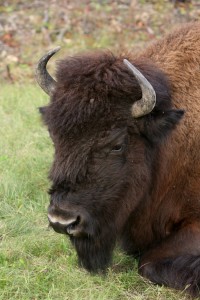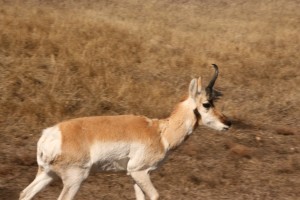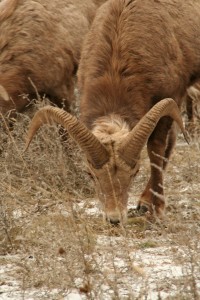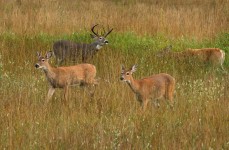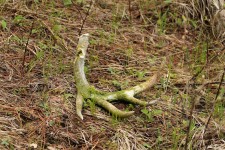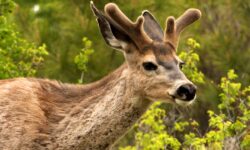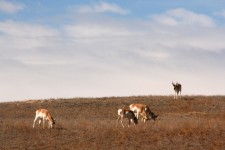Often I catch myself using the terms antler and horn interchangeably, such as “I’m going horn hunting”, even though I know they are different. One of the obvious differences is that antlers are shed annually while horns are not, which is why I go shed (antler) hunting and not horn hunting.
Living in north Idaho, we are surrounded by mammals with antlers–moose, white-tailed deer, mule deer and elk. Wild mammals bearing horns are fewer (bighorn sheep and mountain goats) or farther away (buffalo and muskox), which makes horns all the more intriguing.
Every time I drive through the Thompson Falls area in Montana, I watch for Rocky Mountain bighorn sheep along the roadside. On mature rams, the massive, curled horns can weigh up to 30 pounds–which is small compared to the 80-pound pair of antlers a mature moose can grow in one year. On rams, the age can be determined by counting the number of growth rings. Those growth rings are composed of keratin, a fibrous protein, which comprises the outer covering of the horn. The inside of the horn is composed of a living bony core.
Not only is keratin an integral part of horns but also a component in the claws and hooves of mammals; hair, nails and skin of people; scales and claws of reptiles; shells of turtles and tortoises; feathers, beaks and claws of birds; the quills of porcupines and the baleen of whales. A rhinoceros’s ‘horn’ is entirely composed of keratin and therefore isn’t considered a true horn because it lacks a bony core.
Similarly, giraffe ‘horns’ are not true horns because even though they have a bony core the horns are covered with furred skin, not a keratinized sheath. Another mammal that is considered to have horns is the pronghorn antelope.
The pronghorn antelope’s horns are a cross between horns and antlers. They have a bony core and a keratinized sheath but the sheath is shed annually like antlers. Also, a pronghorn’s horn is branched (hence the name pronghorn) and true horns are unbranched. Pronghorn antelope are the only animal in the world to have a forked ‘horn’ that is partially shed every year.
Even though true horns are unbranched, they can take on unique shapes–the full curl of the bighorn sheep or the spiraled horns of the spiral-horned antelope. The curves and spiral shapes are caused by growth pulses that result in some areas growing faster and thinner while other areas grow slower and thicker.
Since horns grow continuously throughout an animal’s life, one might think there would be little nubbins of horns at birth. However, horns begin as small bony growths under the skin in the subcutaneous connective tissue and are not even attached to the skull. These small growths (called ossicones) will fuse to the skull bones sometime after birth and up to four years later in giraffes.
Even though giraffes, rhinoceros and pronghorns don’t have true horns, it is easier to say they have horns than to figure out what to call the structures protruding from their head. One thing for sure is that they are not antlers.

